Remembering Ellen Lanyon
Remembering Ellen Lanyon
This compilation of words and pictures builds on the memorials, the receptions and conversations among friends following the passing of Ellen Lanyon. Deeply missed and hard to forget for the lives that she touched, we intend this document to be open for continued remembering and appreciation. She was magic. We were anticipating our interview with Ellen on her return. Unfortunately we missed her and still do.
ELLEN LANYON
Lucy’s and my friendship with Ellen Lanyon goes back a half century. I recall many lively dinners and parties at her loft and our apartment. As was common in our generation, recreation was mostly conversation about art, above all, what Franz Kline termed “the dream,” and Ellen’s talk was about her great artistic forebears who cherished the dream as she had. Her lifelong passion was following in their footsteps. What better way to spend a life. She was indeed fortunate in this. As any of you who have been in Ellen’s loft know, she was an avid collector of eccentric man-made objects, natural forms and strange mechanical devices. These became the players in her works. Her aim, as she said, was to “convey the amazing phenomena of life as it exists and is altered by the persistent manipulation of human invention.” And she succeeded masterfully.
It was my privilege to be able to follow at first hand Ellen’s creation of a major public work in Chicago, the “Riverwalk Gateway,” a series of fifteen murals that chronicle the history of the city. Whenever she was in New York during its creation, she kept us breast of its development. It turned out to be one of the great public monuments of our time. Some years ago, I was on a NEA (National Endowment for the Arts) jury with Linda Nochlin to commission works of art for the then new police station in Miami. Ellen was one of the three artists we selected. A few years later, while in Miami with Lucy, we happened to be walking near the police station, and Lucy insisted that we go in and take a look at the works. She announced to the officer at the desk that I had been one of the jurors. Was the policeman reaching for his revolver? Luckily, a colleague of his pointed out that there was this one mural that they admired– Ellen’s.
I’m convinced that it saved my life.
Ellen and I had a topic she liked to discuss that I was especially knowledgeable about–that is, the Lanyon family in Cornwall, England. One of them, Peter Lanyon, was an Abstract Expressionist painter, the most accomplished in England during the 1950s. I mention this because creating art seems to run in the Lanyon family both here and abroad. It may even be genetic. There is Ellen and her husband Roland Ginzel, and Andrew and Sarah. And Walker, who seems to be the proverbial chip off the old block. But on the evidence of a lecture Walker gave me during a gallery visit, he may turn out to be an art critic.
We all mourn Ellen’s death with them.
Irving Sandler
The first thing that comes to mind is her natural generosity, her openness and her curiosity.
Then, how immensely disciplined, organized, project-motivated and hard working she was.
Then, the great shock of her death – Margaret Morton phoned me with the news mid-day on October 8th. As we spoke, I almost immediately felt grateful that Ellen had been spared a long illness or decline, that “she went with her boots on” returning home with new prints after a trip to England she had been looking forward to. Now, many months later, it is still hard to believe that she is gone.
I last saw Ellen shortly before we each left the city for the summer. In recent years, we would sometimes meet one-on-one for a visit when things had calmed down at the end of the season, before summer. Our last such visit, on June 25th, was an especially good one. Ellen had suggested we look at Alice Aycock’s drawing show at the NYU Grey Gallery, also on my “to see” list. It was an extremely hot day. I walked over from Duane St, rang her bell and we set out through Washington Square Park settling on a bench in the shade to chat, visit, catch up and catch our breath. She was much looking forward to her carefully planned trip to England, a mix of working on a new edition of prints, visiting family in England together with her brother, and meeting up with Andrew, Sarah and Walker somewhere in Europe. The Aycock show was marvelous! Ellen knew Aycock’s work intimately, from the start, and admired it. I was unfamiliar with her work on paper, was discovering it and very moved by it. We had a very good, intense and intimate time looking together.
I first met Ellen and Roland in the mid-50’s in Chicago while working together at Exhibition Momentum. She and Roland were somewhat older than I. At that point it made a real difference. They were established, teaching and running a fine print workshop on the Near North side while I was an undergraduate at the University of Chicago, taking a few courses at the Art Institute and painting on my own. In 1958 I moved back East and we didn’t meet again for 20 years.
At the opening of a “Distinguished Alumni Show” at the Art Institute of Chicago in 1976 in which we both had paintings, Ellen invited me to share a small space she had recently found on Hudson St in lower Manhattan. At that time we were both looking for a base in New York. This was perfect. We alternated in our use of the space, so it wasn’t until a few years later, by which time we had each found our own places that we came to know each other well and exchange studio visits. Of the many times I saw her work, her 2009 show at the Century Club “The Persistence of Invention” stands out. It vividly and imaginatively celebrated the spirited ingenuity manifest in her amazing collection of instruments, tools, gadgets and animated ceramics. She wrote a fine wall label for the show, a sort of manifesto and tribute to her roots.
Ellen was intensely social, an active participant in many arts communities. We were colleagues at Cooper Union and more recently at the National Academy. Her contributions were huge! Throughout she felt a great loyalty to Chicago, exhibiting there over the years and maintaining strong ties to the mid-West. She was a catalyst and had a natural and easy way of bringing people together. I remember impromptu gatherings, brunches or evening parties on the occasion of out-of-town visitors, often with Chicago ties. Many introductions as well as lasting friendships were made around that table on Prince Street.
She will be remembered and missed.
Jacqueline Gourevitch
When I first stepped foot into Ellen’s loft on Prince street in 1998 I was enchanted. I had come to be interviewed for a position as her studio assistant. We sat that day for the first time at her large round dining table in the wicker-backed chairs under the low centered light that illuminates the surface of the table. I showed Ellen my book of paintings that had at the time many black crows like the taxidermy ones that inhabit Ellen’s loft. We talked easily and found that we were both from Illinois (where life was often consumed by meal preparation) and knew the same people in Johnson, VT. I was hired. Between the years 1998 and 2005 I was warmly welcomed into Ellen’s studio and home and into the richness of her creative process. I find that many of my current studio practices come from Ellen: I wear a painting apron, I use a spray bottle to keep my paints moist, I hang my tools on the wall, and keep making work no matter what.
Early on we went for a walk around the neighborhood and Ellen took me into her favorite bakery and butcher shop where she would buy fresh mozzarella. She had a spark, a delight for life, for the wonderful, the absurd, and as an artist she shared the weirdness and wonder she found in the world. To walk with her was to be guided into that sphere of winks and mystery.
Ellen would call me “kiddo” often. She would have something she found in her closet over the weekend she thought would look good on me or that I could use. A small fabric travel bag with the logo blacked out with marker, a long wool winter coat that was too long for her, a green spring jacket from the Miyake Design Studio (this jacket I still wear and love the memories it gives me every time I put it on).
Through the years Ellen had major projects: a retrospective at the National Women’s Museum in DC (which we travelled together by bus to view), the Chicago Riverwalk Mural Commission, and the Hiawatha Murals in Minneapolis. During these projects I got to spend my days in Ellen’s world through her paintings and archives and her stories about her family and her life. She welcomed me and so many others to come along for the adventure.
She would always offer me something for lunch. She would heat up some leftovers or make a sandwich and we would sit at the big round dining table, in the wicker-backed chairs with the light illuminating the table and eat together. Then she would push her chair back slightly so she could face me and we would talk a bit. During those years I met my husband, got a job as a teaching artist for Lincoln Center, moved to DC, got married, and moved to Barbados for 8 months. When I came back to New York I was again welcomed in to Ellen’s life as her studio assistant and friend. When I told her I was pregnant she told me she was going to be a grandmother. My daughter Dinah was born three days before her grandson Walker. Her joy for both is her gift. She gave her love genuinely and it is woven into the world through her images and all the people she walked with, ate with, and pushed her chair back to see.
AUTHOR? Jennifer Muskopf
My earliest memories of Ellen are at Oxbow, the summer of 1972 or 1973 (I am not sure). It was one of my first teaching jobs; I brought my husband Max and son Nikolas, a toddler. We stayed in a very rustic cabin – it rained and rained, everything was damp and soggy. Nik was covered with mosquito bites. The ever-practical Ellen had ointments and useful advice. Feminism was spreading like a hot virus among young women art students. Ellen and I were part of a loose national network of artist activists: I’m sure that’s why she brought me there! I remember calling an evening meeting. The room could barely contain everyone, excited to be part of this burgeoning movement. Both Ellen and I had been amassing slide collections, which we shared with the participants avidly. Everyone was buzzed, making wild and crazy art. Ellen and I also had quieter times, sitting on her porch, talking about our personal and professional lives. I was moved that she treated me as a peer despite the gap in age and experience, but that was who she was, always.
Joyce Kozloff,
In 1971, when I was organizing WEB (West East Bag), a national network for feminist artists, someone told me the ONLY person for the Chicago contact/organizer would be Ellen Lanyon. They were so right. I soon met her, loved her, and we became friends and co-conspirators on many women’s art projects, including the ecology issue of Heresies. Within a few years she turned up in the loft just beneath mine on Prince St., where she lived for the rest of her life. What a pleasure. Another coincidence: in 1975 I was in the Everglades for one day, walking a very, very long boardwalk when we saw in the distance a small figure. As we got closer we saw it was carrying a portfolio – an artist! Then we could tell it was a woman. Then we realized it was Ellen. She was in the Everglades on commission from the Dept. of the Interior.
Ellen was so practical and so much fun, so independent, so indefatigable, and so incredibly, casually efficient. (She kept our co-op building alive practically single-handedly for years.) I always thought of her as the ideal Midwesterner. Or the Midwesterner as artist, as magician, as “everyperson” whose hand appeared so often in her work. I just spent the morning going through the file I kept on her, whimsical postcards and actual letters (those were the days) and thought – not for the first time since her death — how much I will miss sitting at her table, surrounded by extraordinary objects and the transformative paintings and drawings they inspired, chatting comfortably as old friends about life, art, people, and all the things we had in common.
Lucy Lippard
I was a frequent houseguest in Ellen’s Prince Street loft, always staying there when I traveled in from Chicago. Even if she was traveling, she would arrange that I could stay. As that solid and initially daunting elevator door would slide open a magical world opened up. Although often stacked against walls or arranged on tables as she worked on them, her artworks held so much power when seen in this context. I would admire the extraordinary plants, especially the round-leaf begonias which are very old-fashioned plants and not easily found (she featured this plant in the painting At the Sign of the Hat, 2009), look at the narrow, spartan, but neatly made bed by the banks of windows facing Prince Street (the first time I visited I didn’t realize this is where she slept!), and of course be amazed by all the “curiosities” (the name of a 2009-2020 series of paintings, incidentally). It was those curiosities that especially sparked my imagination and I began writing poems about them. When I first told Ellen about the poems, five years after I’d written them, she was a more than a little suspicious, and asked to see them. And then required (and I choose that word carefully) that I read them aloud to her, as they were nonsense poems, in the legacy of Lewis Carroll and Edward Lear and best read out loud. She sat very attentively, with a determined expression shaping her face. “Read that one again,” she said at times. “And that one again.” I felt I was being tested. Apparently I passed the test, as we did end up publishing selections from her amazing “Index” drawings of all the objects together with the poems in our volume “Ballary Marvels.” This was her favorite, titled “The Fireworks Pagoda”: Hey pagoda!/Rolled o-va/All exploda?/ Poor pagoda….
It wasn’t her favorite because it was so short (although that probably had a part in it). It just tickled her! She would laugh and literally slap her knee upon hearing it or later upon talking about it. She used the image of that “spent fireworks pagoda” in a lot of her prints and paintings, starting with an exquisite egg tempera—the medium for which she was so well-known—portrait titled Peking Pyrotechnics of 1993. I hadn’t known at the time of its use in her artworks. I’d focused in on it because I kept an exploded fireworks pagoda on my own curio shelf. That little paper house held a lot of magic for her….
I’ll always remember how she got up very early in the mornings (and I thought I was an early riser), well before first light, and would make coffee and start her day. Days that included more work, correspondence, appointments both professional and personal, dinners and events than I could ever dream of completing in one day. And she even managed to read the New York Times thoroughly each day! She was always so solicitous of me as a guest, wanting to be sure I was happy and treating me as I would prefer to be treated in my own home. I would tell her again and again her style of living was completely in synch with what made me happy. Not a lot of fuss, natural things and beloved objects all around, and a good cup of coffee in the mornings. I felt so comfortable there. And so comfortable with Ellen. We would talk late into the evening or watch TV. Simple pleasures, but so rich.
Lynne Warren
No doubt we have all struggled to put into words just how large Ellen Lanyon, all five-feet-something of her, loomed in our lives. It is not possible — she was too many wonderful things to so many of us, and what she gave us all was too rich and enriching to put into simple words. She mentored us, nurtured us, fed us, introduced us, kept us close. Always smiling, she encouraged us – don’t let it get you down; don’t give up, keep going. It will be OK.
An optimist, Ellen never seemed to struggle. Instead there was always some exciting project on her horizon, another challenge for her to relish, another new friend to help along. Her drive was not governed by ambition alone, as it is with so many, but by a pleasure in the doing, the making, the meeting, the sharing. Ellen was so much about sharing, which explains why so many of us are here this afternoon. She was a source of advice and could network with the best. She was a font of information not just on artists, curators, and collectors – she knew all the players not to mention where the skeletons were – but more so what made things tick in our world and how to survive and succeed in it. She was generous to her friends, her colleagues, sharing her knowledge and her wisdom, helping us to keep our eyes on the horizon and our feet on the ground. Don’t give up. Keep going. It will be OK.
But Ellen not only guided, she also remembered. And what she remembered was important. She was a great source of information not just about the cultural world of post-war Chicago where she and Roland were at the center of all the action, but also on the more recent New York scene dating to the late 1970s. Ellen was a friend to both a young dealer named Allan Frumkin and Jean Martin, a young Chicago artist who later became Mrs Allan Frumkin. During the 1950s and early 1960s Ellen was the Allan Frumkin Gallery’s restorer of paintings, and her name frequently appears in the early correspondence.
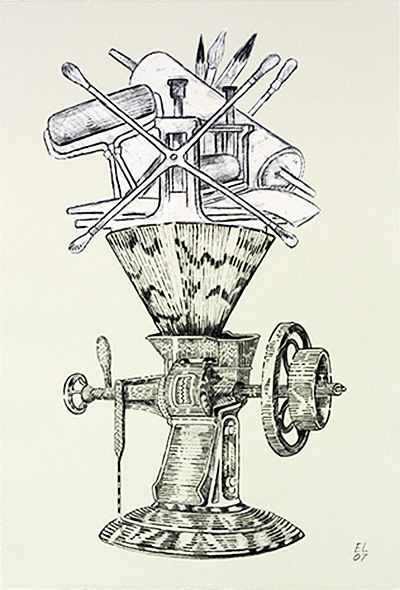 I met Ellen in 1980 when I went to work for the Frumkin Gallery in NY. Without her unique perspective and sage advice I would not have become Frumkin’s partner and eventual successor. She helped me as a young dealer navigate the complexities of the adult art world, to understand, even appreciate, the challenging personalities and the foibles of an ever-shifting cast of art world characters. Our relationship remained strong all these years: Ellen would often drop by the gallery to present a gift of material relating to the gallery’s past, or some other recent discovery: gallery announcements from the early 1960s, a costume she wore in one of Red Grooms’ performances, or to relate anecdote about Westermann, or Arneson, Chicago in the 1950s or SoHo in the 1970s.
I met Ellen in 1980 when I went to work for the Frumkin Gallery in NY. Without her unique perspective and sage advice I would not have become Frumkin’s partner and eventual successor. She helped me as a young dealer navigate the complexities of the adult art world, to understand, even appreciate, the challenging personalities and the foibles of an ever-shifting cast of art world characters. Our relationship remained strong all these years: Ellen would often drop by the gallery to present a gift of material relating to the gallery’s past, or some other recent discovery: gallery announcements from the early 1960s, a costume she wore in one of Red Grooms’ performances, or to relate anecdote about Westermann, or Arneson, Chicago in the 1950s or SoHo in the 1970s.
As she was to so many, Ellen was a mentor whose mere presence, a constant that we came to depend on, reassured us that it was all going to be OK.
I have benefitted hugely from Ellen’s guidance and her company, and from the company she brought together around the table on Prince Street. The only way I can imagine honoring her memory is to try to emulate her supportiveness, her warmth, affection, and her pleasure in the company she kept, traits that one finds so rarely in the art world today. All the more rare without her.
George Adams
With Ellen I do not know where to begin.
I love and still love Ellen and her personal world; her objects (we used to flea-market together looking for objects), her work; which is totally unique and reflects her objects, and her slightly surreal psyche.
We have been friends for so many years, ever since Lucy Lippard introduced us in the 1970’s. We spent time together in Chicago in the late 1970’s; she offered me her home when I was showing there, and my first experience with one of my favorite institutions, The Field Museum.
We spent time together in New Orleans in the 1980’s; we took The Streetcar Named Desire together and followed a Dixieland band in a street funeral march while there for a CAA conference.
We spent time together in Cairo; in1990, when it was still whole. and not crumbling., sharing the wonders of the great Egyptian Museum and the magical Nile .
Ellen had taste, when it wasn’t a bad word, maybe visual intellect is a better expression.
I guess above all she knew how to live, how to share, how to paint and had a sense of humor while doing it.
I miss her.
Michelle Stuart
Ellen was the most generous, ethical and caring artist I knew. She was so honest and eager to share her contacts with other artists, quite a feat in today’s art world. She had parties at her apartment for me after my shows in New York and invited many of her art world friends to attend and meet me. If I ever needed to ask someone for advice or comment I knew Ellen was the one who would send me straight information without having her own personal agenda. I knew her and her husband Roland for many years, maybe through Irving Sandler, a mutual friend. All artists I know who knew Ellen, respected and loved her. If there were more like Ellen in the art world it would be a kinder place. She was a tireless worker and devoted herself completely to her work. Her work is original, beautifully crafted and deserves more recognition. It didn’t happen during her lifetime to the extent it should have but maybe it will happen now.
Phillip Pearlstein had painted a portrait of Ellen and brought it to a party she was giving for me after one of my openings and she and Phillip would not open it at the party for fear of taking attention away from me. That’s the kind of person she was. I will miss her terribly.
Her family, Roland, Sarah, Andrew and Walker meant the world to her.
Mira Lehr
The first time I met Ellen Lanyon was at the Spring St Natural restaurant on Lafayette and Spring St, in New York city. My friend Phyllis Bramson was in town and she suggested I meet her friend Ellen. They were already seated when I arrived. I sat across from Ellen, a small elfin woman with bright twinkling eyes. We exchanged greetings and said, “Do you know why you didn’t get that teaching job at Cooper Union?” My only response was “How in the fuck do you know about that?” I was in shock. Phyllis sat quietly and simply observed. While laughing, Ellen began to dish. She said the acting dean or chair thought that I was Chinese because I had an exhibition on at the Ronald Feldman Gallery of my China Series. He assumed that since my work was about Chinese history and my name is Nancy Chunn that I was Chinese. First rule in geometry is “never assume”. He probably figured here is a two-for-one, a woman and an ethnically diverse faculty member.. He called me to find out if I was interested in filling in as a visiting artist for the semester. Of course I was. I was teaching at the School of Visual Arts in the continuing education department and could fit the new class into my schedule. I was so excited. Perhaps I could even get a full-time post. So I came in for the interview which lasted for about two hours. He even asked me to write a course description and send it back asap. I was teaching that evening at SVA and needed to go home and change clothes. As soon as I got home, the phone rang and he said that he had just found out that the artist who was teaching in that time slot had decided to stay on and therefore there would be no position for me. What the hell. During the interview he had made it clear that Cooper’s policy was to have visiting artists only teach one semester. But now the goal posts were obviously adjusted. When he saw that I wasn’t Chinese the job was no longer available although he kept me in the interview for almost two hours. Ellen was gleeful when she explained that she was teaching at Cooper at the time and knew the entire story. I had only spoken of this experience to a few of my friends. I was so hurt and disappointed and thought I had failed the interview. I couldn’t figure this out. This happened in the 90’s and it didn’t enter my mind at the time that something like this could happen. It took this stranger over a diner table to tell me the truth about an incident that occurred so long ago. I don’t think I ever thought about Cooper without disdain, but I did become very friendly with that delightfully humorous elfin woman named Ellen Lanyon. Ellen became a mentor and a continuing source of inspiration for me. It’s hard for me to accept that she is gone.
Nancy Chunn
Ellen was/ and will always be a mentor and was a good friend, who I talked to on the phone at least once or twice a month. As she put it, we were buddies! I went out for dinner after the art fair in Chicago, right before she went to England.
Ellen left me small mardi gras mask. I have a grouping of masks and heads in my studio bedroom. I didn’t really like the mask she had given me that much, too kitschy… but I took it home and put it up anyway, so that I would think of her. I almost threw it away. Now I am glad/grateful to look at it every time before I go to bed.
Last year she also gave me a cuff bracelet that she said did not fit her. I will really treasure that…. as it is something that I would have bought and thus I wear it often.
I think I will have to get used to this kind of news… given the ages of people I relate to. So, honestly, Ellen’s passing is very hurtful and sad, but I am glad I had her friendship. That is how I am dealing with her death. I am concentrating on the good things that I will remember about her… and honestly, she has sort of entered my body/mind… and I think she will always be there now.
Phyllis Bramson
Ellen’s loft is crowded. A visit would find her surrounded by old friends, some of whom she is actively memorializing in a portrait, often in the form of group tableau. Ellen in her painting apron pads around the studio rearranging an errant sitter amidst the others and offers you coffee whereupon you sit with the rest of the gathering. These individuals are unique and curious characters. They populate her paintings and prints, artfully grouped throughout her loft, organized at times by type, whether complementary or contrasting types- the winking face teacups next to the embalmed mariachi frog quartet, the reptile humidor sharing a shelf with several brass figurative nutcrackers. Ellen collected these objects over a lifetime spent roaming this and other continents. She found these peculiar entities on the fringes of culture- flea markets mostly- picking out gems amidst a carnival of castoffs and oddities. Most of the furniture of her live/work SoHo loft could be counted as display cases, be they vitrines, ancient glass cabinets or surfaces of elderly desks or the tops of flat files, her inspirational finds massed everywhere, all of them active collaborators in her artwork (which, hanging all over the loft, operated akin to mirrors reflecting the loft’s interior). She was proud of these things of hers, each new acquisition causing her to rearrange earlier ones into fresh, novel constellations and conversations.
The same fascination, glee and care she practiced towards her Chinese ink wells, tiny toy guns and ceramic shoe pin cushions she also wrapped around her many and diverse friends. Being “found” by Ellen and taken under her wing was to be placed with great zeal into a whole universe of similarly strange and wonderful people, and plucked out to participate with a wider array of folks one did and did not know at a big dinner party or holiday brunch. To see the photographs of these events was to remark on what a group of people that was!
The great protectress and appreciator of her friends loved seeing them rub shoulders with others from wholly different circulatory systems in the art world, to everyone’s benefit. The nature of her magical realism was to bring the unique and rare together in tableaux of heightened narrative potential, a sensibility that defined both her art and her life.
Sara Walker
Years ago when I was planning to attend the School of Visual Arts, Ed Paschke encouraged me to take a class with Ellen Lanyon. Following his advice I enrolled in Ellen’s class at SVA in the fall of 1980. I remember meeting her that first day of class and feeling a connection. One day she announced, “Are there any strong men who would want to work in my loft building and mop the stairs?” I responded, “Are you only asking the men? I’m capable of mopping floors!” The job became mine, which soon led to me being her studio assistant, which turned into a 34 year friendship. Ellen became my mentor, artist friend and someone I referred to as my “New York Mother”. She was a kind and thoughtful teacher who once told me, “Don’t make excuses for not being able to make the artwork that you want. If you want to make it just do it!” Ellen was part of my coming of age as an artist and continued to support me as my career evolved.
As her studio assistant, she invited me into her home. Soon the loft became a sacred place for me. I spent hours there as her studio assistant and eventually became a loft sitter. Over the years I enjoyed many late afternoon teas along with her dinner parties. I spent hours on that leather sofa looking out onto Prince Street. This past summer I sat on the same sofa as she shared images on her computer and we exchanged confidences. The way Ellen arranged all the magical objects in her loft inspired me to carefully consider my personal surroundings. I always loved the painted yellow wall in her kitchen and have just painted my kitchen the same yellow in honor of Ellen.
I cherish the time I spent with Ellen, the conversations we had and how she shared her wisdom in ways that will resonate inside me always. Ellen’s laughter and broad smile are still so vivid in my mind. It seems strange to have a New York City without her. Ellen’s voice is still in my head encouraging me to achieve my goals as an artist and supporting me as a mother. I am blessed to have had Ellen in my life and I will miss her in ways I can’t describe.
Susan Leopold
Ellen was one of the first School of Art faculty members who befriended me when I started teaching at Cooper Union in 1980. Decades later, when we had dinner at her loft the night before she left for Chicago before going on to London, I could not have imagined that it would be her last night in New York City. Throughout the intervening years, Ellen was a mentor, a colleague, and a dear friend. Her commitment to her work, her generosity of spirit, her playfulness, and that ever-present twinkle in her eye, will remain sharply in focus.
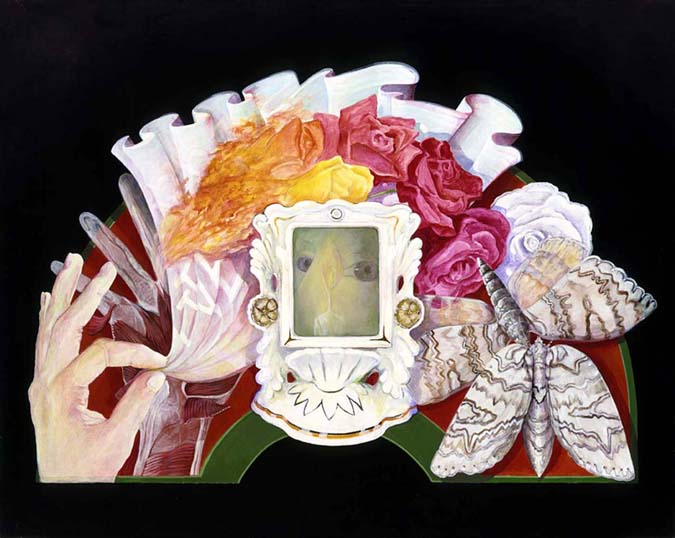
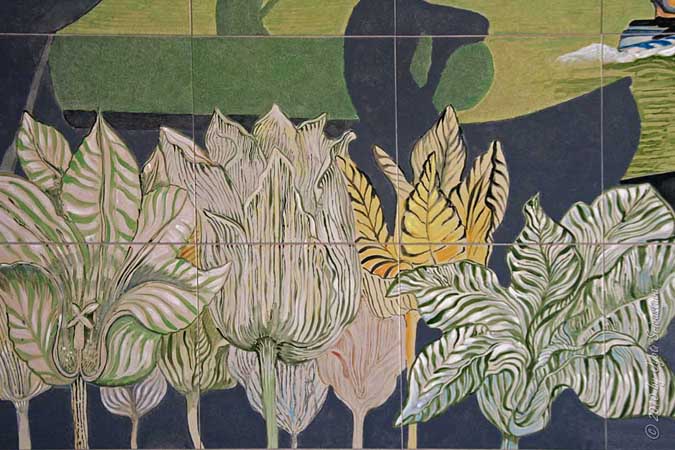



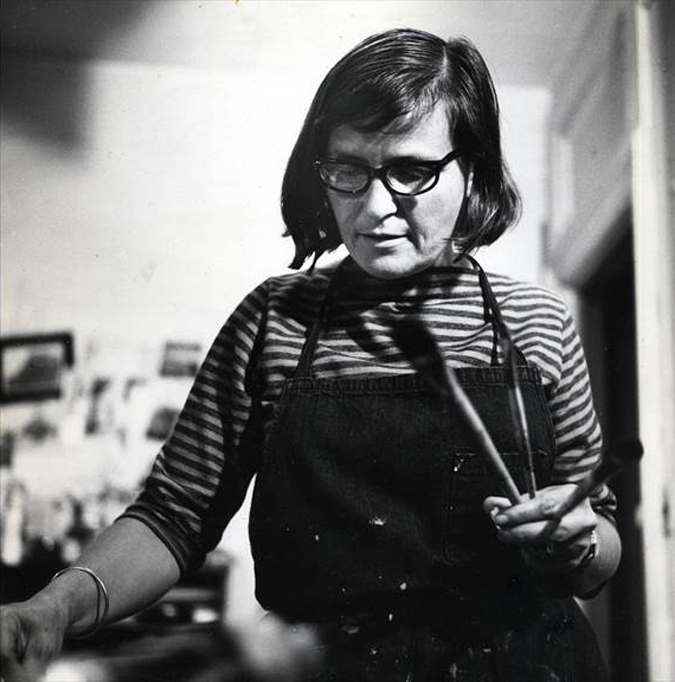
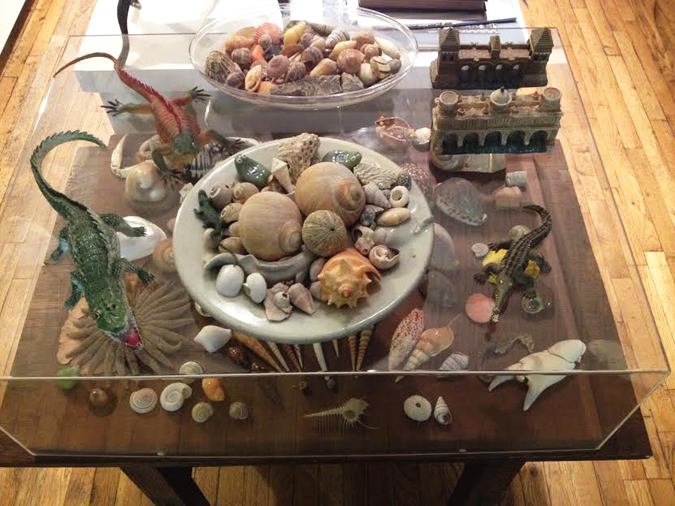
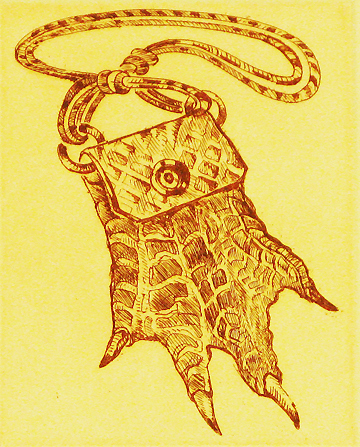
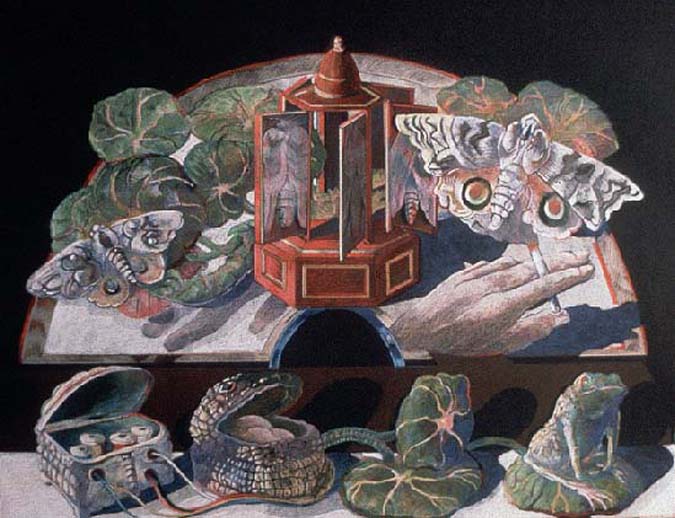
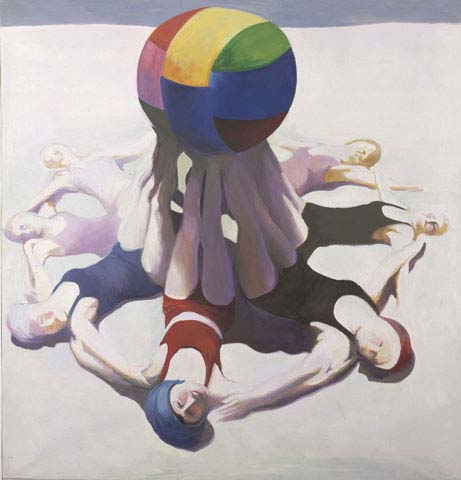
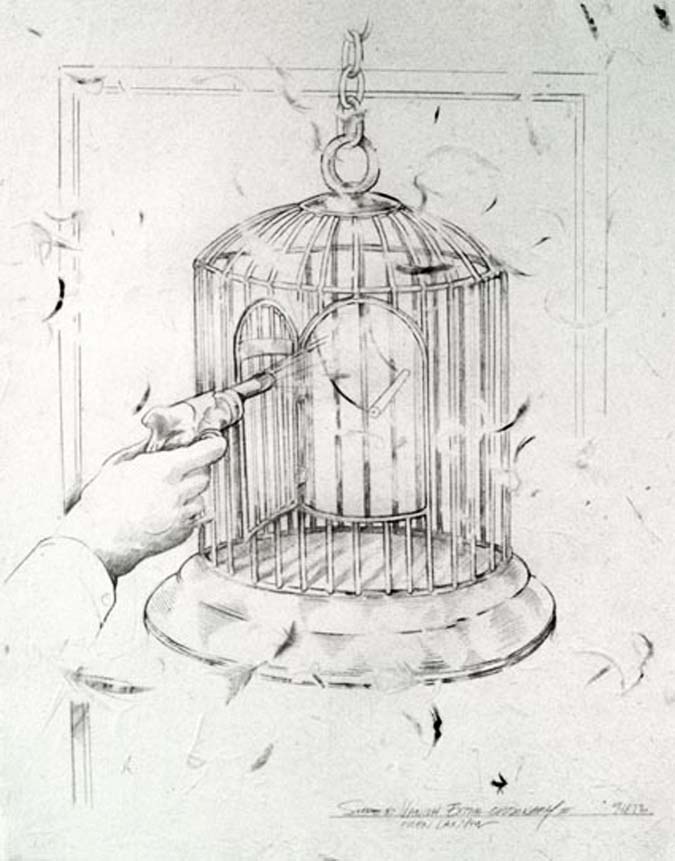
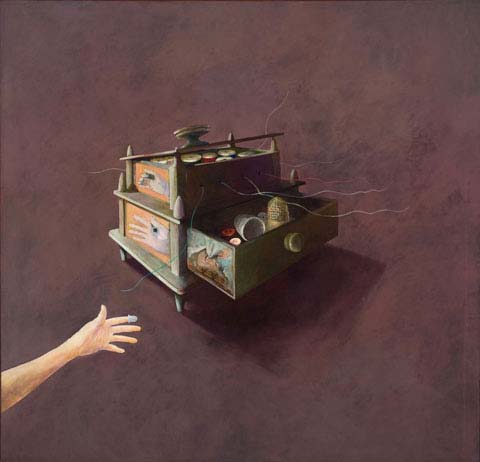
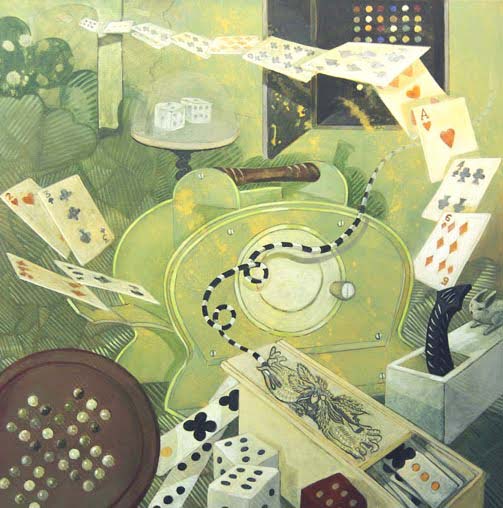
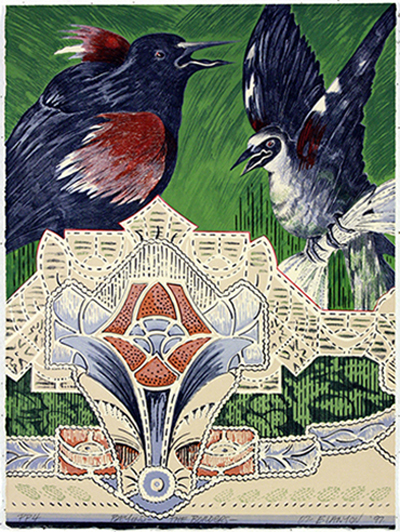
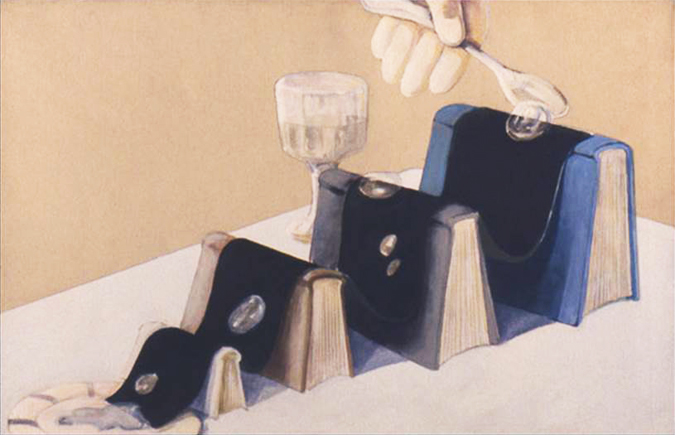
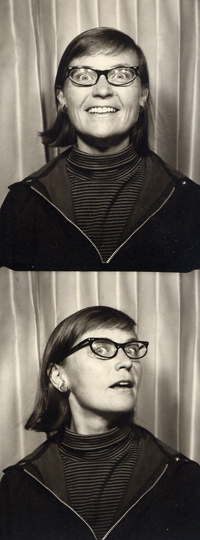
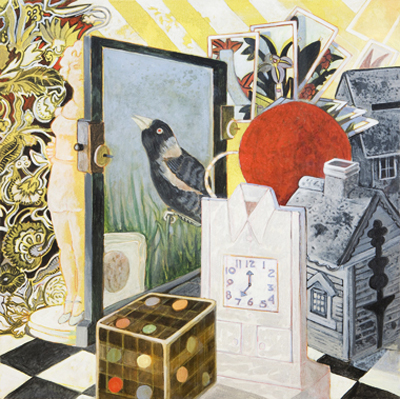
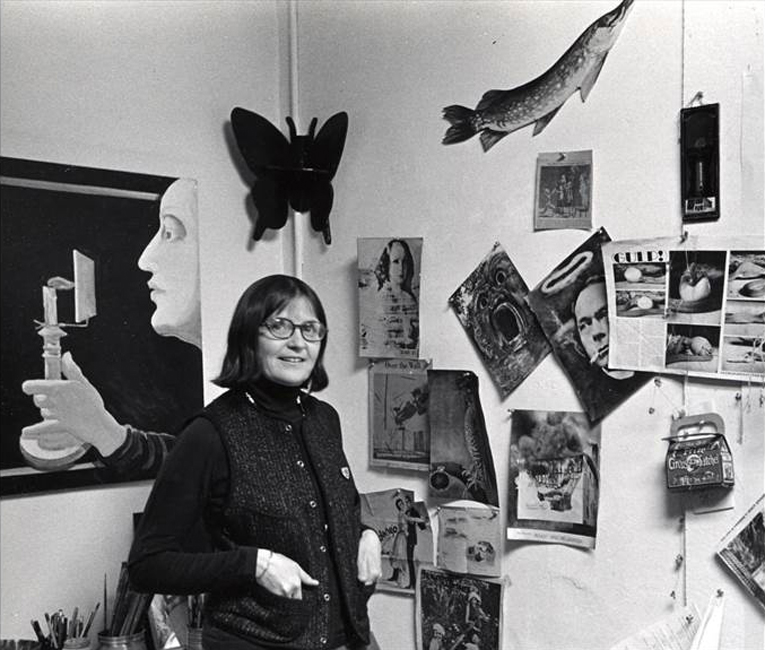
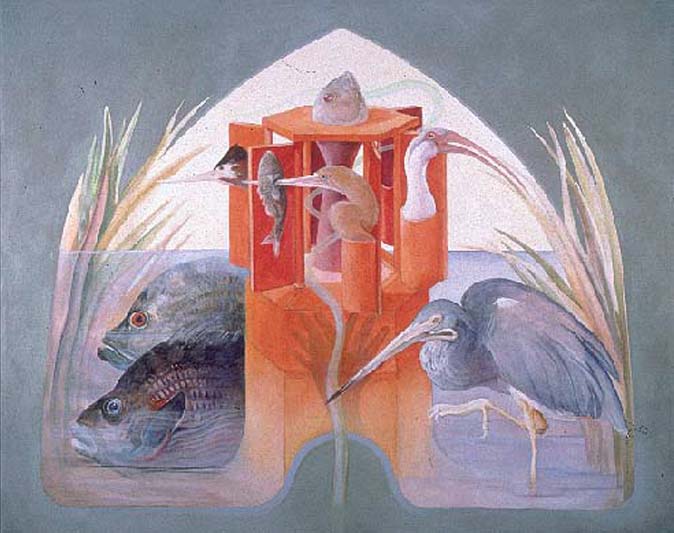
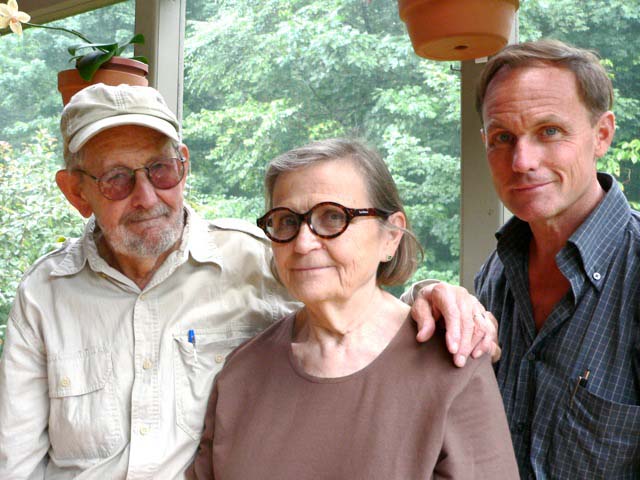
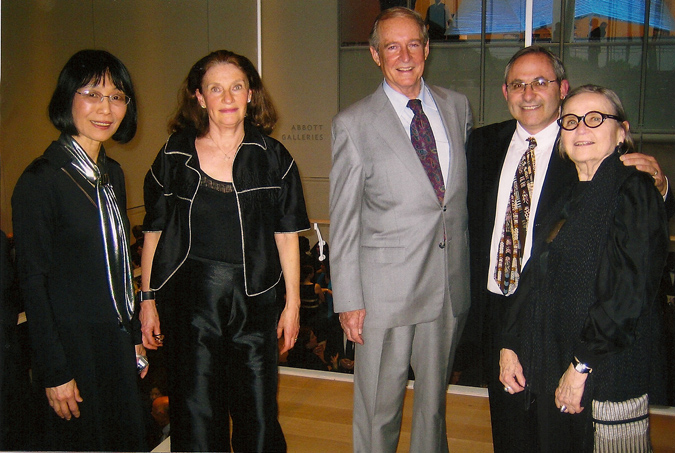
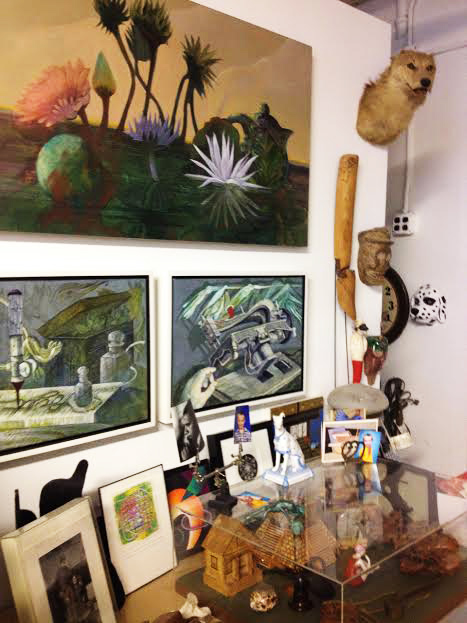
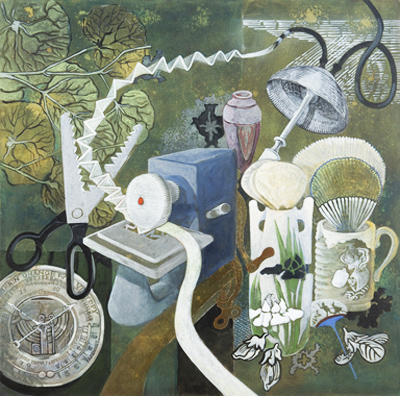
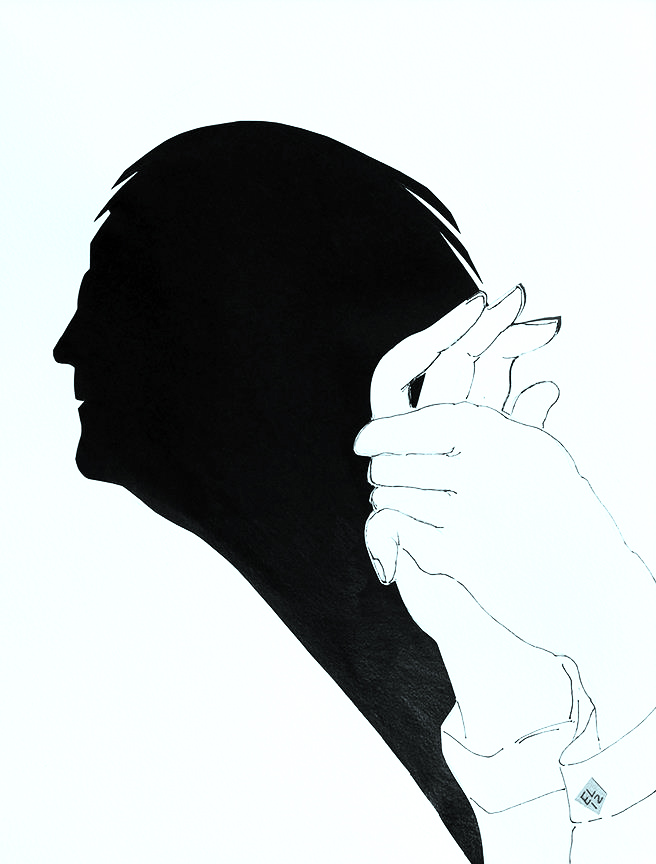






Thank you for this wonderful tribute. It helps having these memories recorded and so beautifully presents the story of Ellen.
I can see how we all shared similar feelings ———Ellen was special.
Ellen would have been so touched by reading this!
Thank you for this lovely remembrance of Ellen Lanyon. I long admired Ellen but knew her only slightly, in connection with my writing about Joan Mitchell, who was a friend of hers at the School of the Art Institute back in the ‘40s. Ellen told me marvelous stories. We also shared the fact of past lives in Iowa City. Ellen still went back from time to time, and I remember she had little tubs of herbs from Stringtown, an Amish grocery store in Kalona, Iowa, which seems like the farthest place in the world from Prince Street. But Ellen had the gift of mixing odd things and making it work.
Ellen was a beloved friend of my beautiful uncle eddie plunkett -who passed in dec 2012..I remember her kindness when I meant her as I met her in 1970 in nyc.may eddie and ellen continue creating magic! Love to her family♥♥♥♥♥♥♥wendyfern hutton
On this 8th anniversary of Ellen’s death in 2013, I want to share my appreciation for her whole body of amazing art, but most important to me is her mural, Notable Women of Boston painted in 1980. After seeing the mural in a book about Boston in 2000, I searched museums, city government, and other likely sources but couldn’t locate it. My search went public in the Boston Globe and ultimately the mural, which had been put in storage, was found and after much haggling it ended up being on display in the Johnson Building at the Boston Public Library for about ten years until renovations displaced it, but it is now at Simmons College in Boston. I am so fortunate to have hosted a dinner for Ellen and Roland when the mural was inaugurated at the BPL. The mural is featured in the Boston Women’s Heritage Trail.